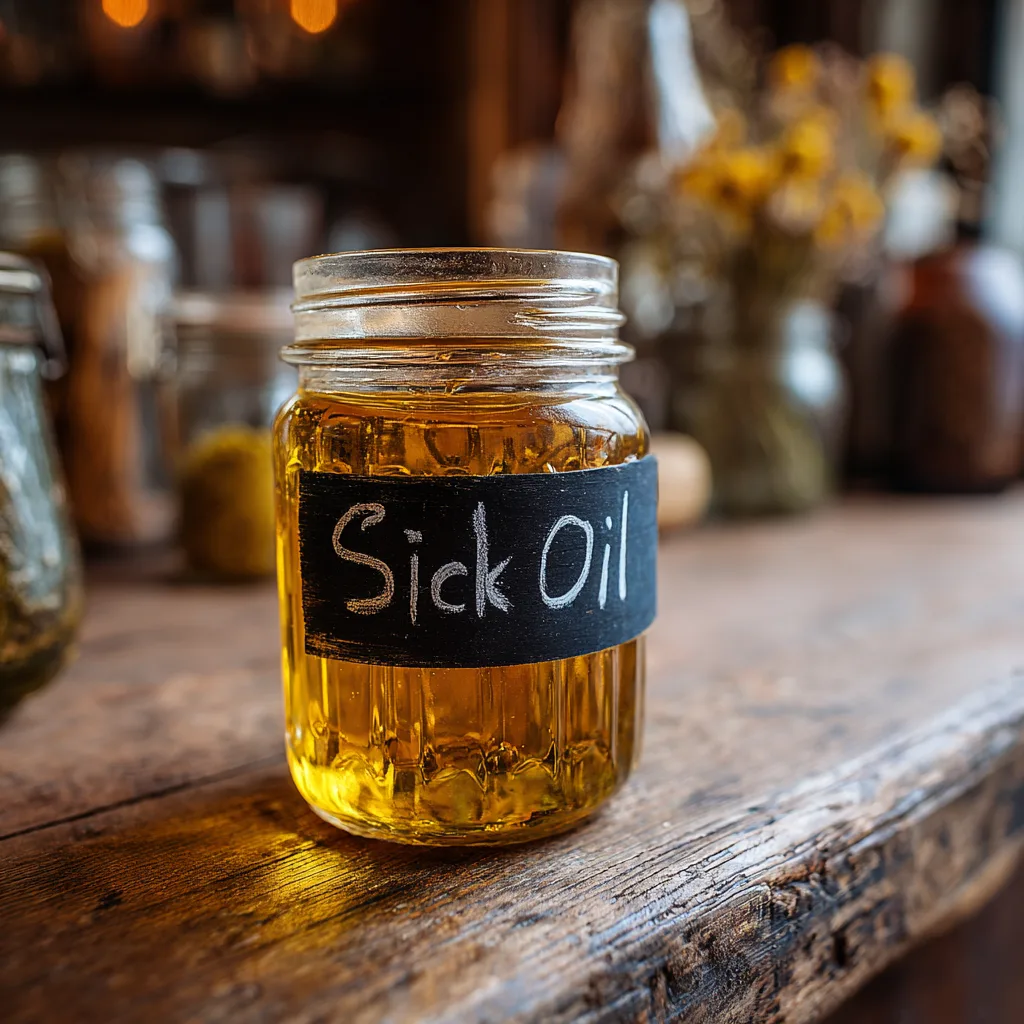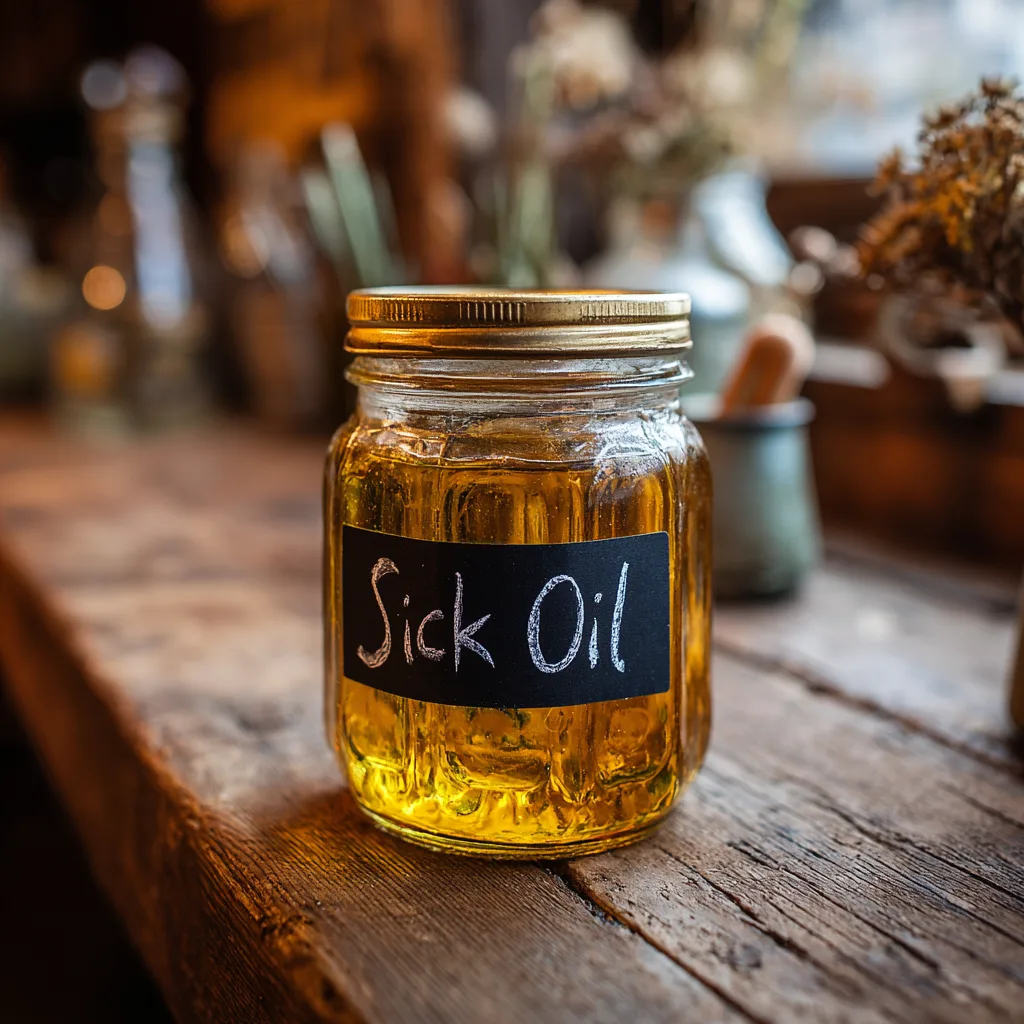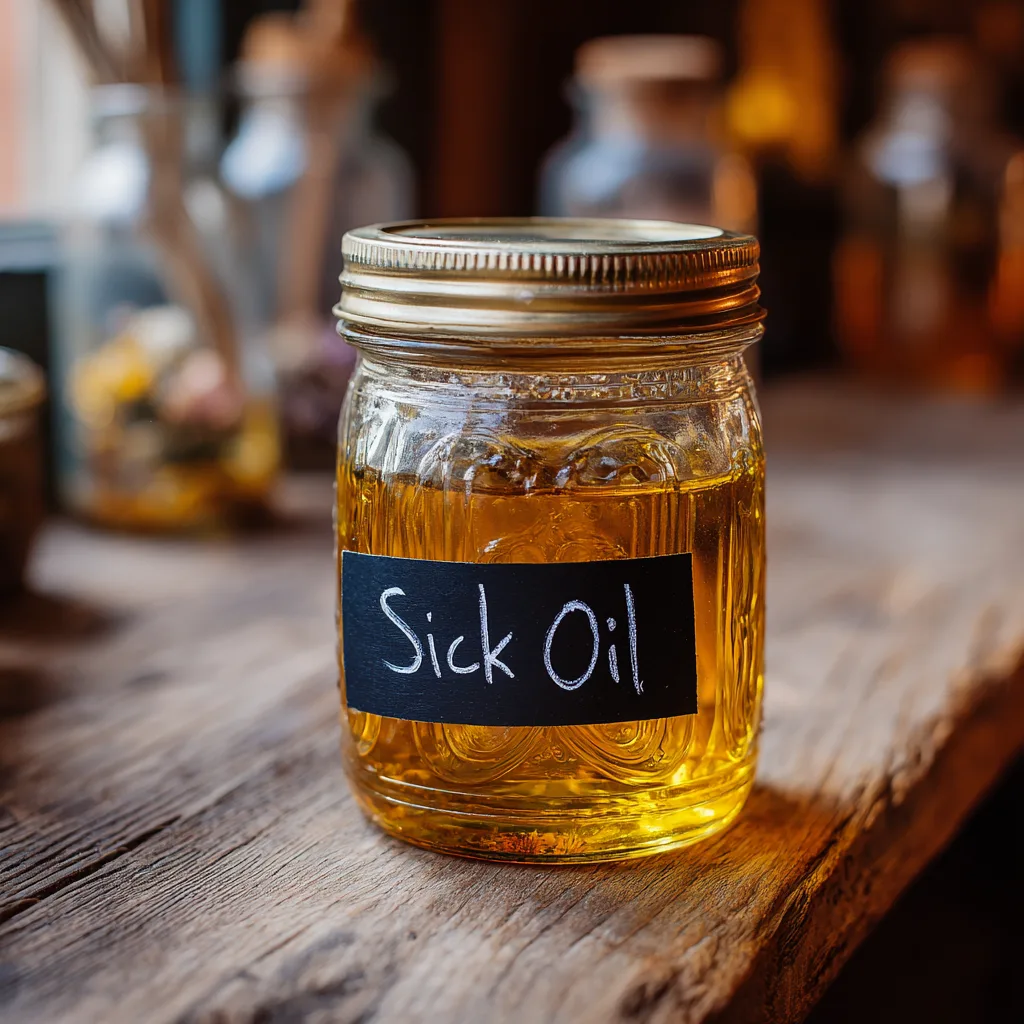When it comes to health and wellness, many people find themselves looking for natural ways to support their families. Long before modern pharmaceuticals became widely available, humans relied on plants, herbs, and oils to provide comfort and healing. Essential oils, in particular, have been used for centuries across cultures to ease respiratory troubles, calm the mind, and ward off infections.
This article introduces a simple yet powerful home remedy: Sick Oil. Made with a castor oil base and infused with a blend of essential oils, this homemade solution is designed to provide comfort when you are feeling unwell. Whether it is congestion, fatigue, or the need for nighttime relaxation, this oil blend can be a natural addition to your home wellness kit.
Before we begin, it is important to make one thing clear: this recipe is not a replacement for medical treatment. I am not a doctor or a scientist. This blend is shared from the perspective of a parent who values natural wellness approaches before turning to pharmaceuticals. If you feel that this method is not right for you, that is perfectly fine. Each family chooses what works best for them.
Why You’ll Love This Sick Oil Recipe
There are several reasons why this homemade sick oil is worth making:
-
Natural Ingredients: It uses only pure essential oils and a castor oil base.
-
Antibacterial and Antiviral Properties: Many of the oils in this recipe have been studied for their ability to fight bacteria and viruses.
-
Respiratory Support: Oils like eucalyptus and peppermint can help open airways and ease breathing.
-
Calming and Relaxing Effects: Lavender and sandalwood are known for their soothing qualities, making this a perfect night oil.
-
Easy and Affordable: With just a few ingredients, you can make a jar that lasts for months.
-
Customizable: You can easily adjust the drops of essential oils to fit your personal preferences.

Ingredients You’ll Need
To make this blend, you will need:
-
1 cup Castor Oil (serves as the carrier oil)
-
10 drops Peppermint Essential Oil
-
10 drops Lavender Essential Oil
-
10 drops Rosemary Essential Oil
-
10 drops Sandalwood Essential Oil
-
10 drops Clove Essential Oil
-
10 drops Eucalyptus Essential Oil
Step-by-Step Preparation
Making this oil blend at home is quick and simple.
-
Choose a Container: Select a small glass mason jar or any glass container with a tight lid. Glass is preferable over plastic since essential oils can degrade plastic over time.
-
Pour the Carrier Oil: Add 1 cup of castor oil into the jar. Castor oil is thick and nourishing, making it an ideal base for blending essential oils.
-
Add Essential Oils: Carefully count out about 10 drops of each essential oil. Adjust according to your needs — for example, add more lavender if you want extra calming effects or more eucalyptus if you want stronger respiratory support.
-
Mix Well: Once all oils are added, seal the jar and shake gently to combine.
-
Store Properly: Keep the oil in a cool, dark place to preserve its potency.
How to Use Sick Oil
This versatile oil blend can be used in different ways depending on your needs:
-
Chest Rub: Apply a small amount to your chest or back before bed to ease congestion.
-
Nighttime Relaxation: Rub into your temples, neck, or feet to promote restful sleep.
-
Respiratory Support: Dab a little under the nose or on your wrists to breathe in the aroma.
-
Massage Oil: Use it as a calming massage oil during illness or stress.
-
Aromatherapy: Place a few drops in a diffuser (with added water) to spread the scent throughout the room.
The Benefits of Each Ingredient
Castor Oil
Castor oil is a rich, thick carrier oil that has been used for centuries in wellness practices. Its moisturizing properties make it gentle on the skin while also serving as the perfect base for diluting strong essential oils.
Peppermint Essential Oil
Peppermint oil contains menthol, which gives it its cooling and refreshing sensation. It is often used to relieve headaches, open airways, and provide energy. Its antiviral and antimicrobial properties make it a strong ally during colds.
Lavender Essential Oil
Lavender is one of the most popular essential oils for relaxation and stress relief. It helps calm the nervous system, supports better sleep, and even has mild antibacterial effects.
Rosemary Essential Oil
Rosemary oil is known to support memory and focus, but it also plays a role in respiratory health. Its invigorating aroma can clear the sinuses and promote easier breathing.
Sandalwood Essential Oil
Sandalwood has grounding and calming properties. It is often used in meditation and relaxation practices. Additionally, it may provide immune support and help reduce inflammation.
Clove Essential Oil
Clove oil has a warm, spicy aroma and is well known for its antibacterial and antiviral qualities. It is often used in oral care products because of its antimicrobial power. In this blend, it adds a comforting warmth.
Eucalyptus Essential Oil
Eucalyptus oil is one of the most widely used oils for colds and respiratory issues. It has antiviral, antibacterial, and decongestant properties, making it a top choice for easing congestion and opening airways.
Why These Oils Work Together
Individually, each of these oils has powerful properties. When combined, they create a synergistic effect that supports the body in multiple ways:
-
Respiratory Support: Eucalyptus, peppermint, and rosemary help clear congestion and open airways.
-
Antimicrobial Power: Clove, eucalyptus, and peppermint fight bacteria and viruses.
-
Relaxation and Sleep: Lavender and sandalwood help the body relax and prepare for rest.
-
Immune Boost: The combination of antioxidant-rich oils strengthens the body’s natural defenses.
Variations of Sick Oil
One of the best things about making your own oil blends is flexibility. Here are a few variations you can try:
-
For Stronger Respiratory Relief: Add extra eucalyptus and peppermint.
-
For Calming Night Oil: Increase lavender and sandalwood while reducing peppermint.
-
For Immune Support: Add tea tree oil for its additional antiviral and antifungal benefits.
-
For Children (with caution): Use gentler oils like lavender and chamomile, and reduce overall drops. Always consult guidelines for safe essential oil use in children.
Safety Notes and Precautions
While natural remedies can be powerful, they must be used responsibly:
-
Always dilute essential oils with a carrier oil like castor oil to prevent skin irritation.
-
Perform a patch test before applying widely.
-
Do not ingest this oil blend. It is meant for topical and aromatherapy use only.
-
Pregnant or breastfeeding women should consult a healthcare professional before use.
-
Keep away from infants and very young children unless under the guidance of a practitioner.
-
Store out of reach of pets, as some oils can be toxic to animals.
Frequently Asked Questions
1. Can I use a different carrier oil instead of castor oil?
Yes. You can substitute with coconut oil, olive oil, or sweet almond oil. Each carrier oil has its own skin benefits, but castor oil is particularly thick and long-lasting.
2. How long does Sick Oil last?
When stored properly in a cool, dark place, this oil blend can last up to 12 months. Essential oils are naturally preserved, but exposure to sunlight and air can reduce potency.
3. Can I put Sick Oil directly in a diffuser?
It is not recommended to put castor oil into a diffuser because it is too thick. If you want to diffuse this blend, mix only the essential oils without castor oil and add them to water in your diffuser.
4. Is this blend safe for children?
Essential oils are very strong, and some (like peppermint and eucalyptus) are not recommended for young children. If you want to use this blend for kids, dilute further or use child-safe alternatives such as lavender and chamomile.
5. What if I don’t like the smell of one of the oils?
You can leave it out or substitute with another essential oil that has similar properties. For example, tea tree oil can replace clove for antimicrobial effects.
Conclusion
Homemade Sick Oil is a simple, natural remedy that combines the antibacterial, antiviral, and calming benefits of essential oils with the nourishing properties of castor oil. It is not a cure, nor a substitute for medical care, but it can provide comfort and support during times of illness, stress, or sleeplessness.
This recipe is easy to prepare, affordable, and completely customizable. You can adjust the oils to your needs, experiment with variations, and create a blend that fits perfectly into your family’s wellness routine.
Whether you use it as a chest rub, a calming massage oil, or a nighttime relaxation blend, this homemade oil serves as a gentle reminder that sometimes the most effective remedies come from nature.



